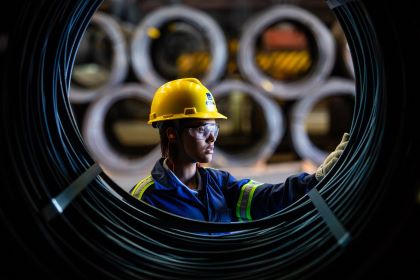At the Alacero Summit 2025 which took place recently in Cartagena de Indias, hosted by the Latin American Steel Association (Alacero), leaders from the steel industry stressed that the Latin America can no longer respond to the excess supply crisis with isolated national measures. Instead, they argued that its only path to stability lies in coordinated regional action designed to restore fair competition and safeguard industrial jobs.

China’s 233 percent export surge and impact on Latin American industry
ArcelorMittal Brazil president Jorge Luiz Ribeiro warned that Latin America is experiencing rapid deindustrialization due to a dramatic rise in Chinese imports, stated the local media reports. According to Alacero, Latin American imports of finished and semi-finished steel from China increased by 233 percent over the past fifteen years, rising from four million mt in 2010 to 14.1 million mt in 2024. This supply influx has displaced local production, weakened regional supply chains, and jeopardized an estimated 1.4 million direct and indirect jobs.
Ribeiro explained that the region is seeing factory closures, reduced output, and declining investment as domestic producers face a market distorted by state-supported Chinese production. He added that Latin American mills cannot compete with subsidized steel sold at prices below the cost of production, and called for urgent action to restore fair conditions in the market.
Geopolitics and supply chain pressure deepen the crisis
Ribeiro pointed out that tensions between the United States and China have created additional uncertainty, affecting commodity prices, logistics, and regional supply chains. These shifts amplify an already difficult environment shaped by global steel overcapacity, which the OECD estimates will reach 721 million mt by 2027. He stressed that Latin American producers cannot confront unfair trade practices alone and insisted on unified, region-wide strategies that align government incentives and strengthen trade defense rules.
A more volatile global environment demands regional strategy
Speaking at the summit, Brazilian academic Oliver Stuenkel argued that individual governments in Latin America lack the power to influence global steel dynamics on their own. He highlighted the need to broaden the regional geopolitical debate to address the combined effects of Asian pricing, US tariff policy, and regional industrial fragmentation.
New measures and regional integration as potential solutions
Many speakers called for stronger trade defense mechanisms. Former Mexican Ambassador to China Jorge Guajardo urged governments to implement prohibitive tariffs on steel products that are already manufactured within China. He also recommended that governments support new industrial projects through pre-announced tariff frameworks that provide long-term certainty.
Brazilian politician and former minister Armando Monteiro emphasized that regional integration is the only sustainable long-term strategy. He highlighted the importance of increasing the participation of regional producers in intra-Latin American trade and strengthening regional value chains. Monteiro pointed to major infrastructure projects such as the Bioceanic Corridor, which aims to connect the Atlantic and Pacific coasts and reduce transport costs for steel and manufacturing across Brazil, Paraguay and Chile.
Latin American industry looks to United States as model of protectionism
Mexican steel representatives pointed to the United States as an example of strong protectionist policy. Salvador Quesada, director of the Mexican Chamber of Iron and Steel Industry (Canacero), stated that Mexico understands the American approach as it also seeks to limit imports. However, he noted that US tariffs have significantly depressed the Mexican market since their reinstatement. According to Canacero, finished steel consumption in Mexico declined by 18.9 percent year on year in September to 18.97 million mt, while exports to the US dropped from 77.1 percent of total Mexican steel exports in 2024 to 45.8 percent in 2025.
US Steel Manufacturers Association president Philip Bell told Alacero attendees that the US steel industry remains stable under the renewed 50 percent Section 232 tariff regime but warned that, even though prolonged tariffs could curb imports from China, it will also strain relationships with key partners such as Mexico and Canada.